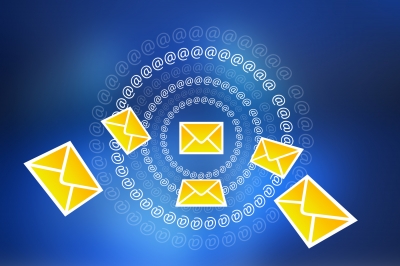How to Define Your Sales Process To Create A Great Auto-Responder Series

Developing a cooperative method between your sales and marketing team can increase your revenue by up to 20%, whereas those without proper alignment can see a decrease of up to 4%.
Consumers frequently buy products and services from an email campaign and an auto-responder series is a good method of making sure that you are sending the messages to your mailing list.
However, an auto-responder series which is too pushy is likely to deter customers from making a purchase and lead to an increase in spam reports, unsubscribers and a poorer brand image.
Therefore aligning your autoresponder series with that of your sales process is essential if you wish to maximise your revenue from the campaign.
Step One – Define the Stages in the Sales Process
The first step is to make a list of all the stages you have in your sales process, right from when you meet the potential client to when you close the sale and even after sales treatment.
You should identify exactly what is said at each stage in order to complete the sale of your product or service. The hope being that you can then mirror this in the auto-responder series.
Step Two – Create a brief outline of what actions the lead needs to take in order to move onto the next stage of the sales process
In the real world, you should know the signs of when a consumer is ready to talk to you more about the next stage in the sales process. If you do it too early or too late, you could lose the customer and they could either not buy the product or go to a competitor.
The behaviours you are looking for are those who are clicking through to see more content, completing a form or another action.
Step Three – Link the actions in step two with the content you create
Consumers like to read content they find valuable and informative. The content you provide also needs to be relevant to the action you wish them to complete.
Stories are pretty effective when it comes to email marketing. Think of interesting customer stories where your product or service has supported their life or given them joy.
Another idea is to give advice on a related matter. For instance, if you are a decorator – you could create content that would describe the best colour schemes for certain rooms, as long as the content has value and interest to the reader and directs them to a relevant action that will set in motion the next stage.
An additional consideration is to make sure that the content is ‘evergreen’ – in other words, despite the day, month or year it is sent – it will be relevant and accurate. This means you are not constantly changing the message just because circumstances are slightly different.
Once you have done this – create the content.
Step Four – Consider the frequency
Email marketing and real life sales are different when it comes down to the time frame you have. Email marketing can take weeks or months to be successful – whereas often in the physical world, you have a single shot.
Having your emails sent out too frequently will lessen the willingness of the customers to stay subscribed to your service and eventually buy a product from you. A good idea would be once every two weeks – you certainly don’t want to send out a message more than once a week.
Step Five – Determine who to send your emails too
You need to make sure that you are regularly maintaining your mailing list – to ensure that you are sending out the emails to the right people.
An email to the wrong person not only lessens your statistics in terms of open rate, click throughs and conversions – but it could increase your unsubscriber rate and spam reports.
Therefore, ensure that the action the lead has taken on your website is sufficient for them to be placed on your auto-responder series.
Step Six – Implement auto-responder series
Once you have made all your decisions – start implementing the process. Place your content in branded email format and start the series with those who you think are ready to read the material. Ensuring that the people who are ready for the message are the only ones that will receive it will improve your open rate and conversions.
Take Action:
Use the above six step solution to define your sales process and create an auto-responder series that will sell your products / services.
Conclusion
Aligning your sales process and email marketing is a good, clean method of increasing revenue.
An auto-responder series can save you time in creating material and manually sending the information. Yet marketers should be keen to keep the series related to their sales process and the content relevant and valuable to their audience for the foreseeable future.
Do you use an auto-responder series in your business?
Let us know how it performs in the comments below!
Image courtesy of cooldesign / FreeDigitalPhotos.net
Read post Post a Comment. Tagged in: autoresponder, email marketing, Email Strategy, sales, sales process
3 Ways To Convert Social Media Followers To Email Subscribers

Your email and social media campaigns can support each other.
13% of all leads in 2013 were generated through Email marketing, making it the third most effective sales channel.
Social Media on the other hand only contributes to about 1% of all online sales, making it one of the worst sale channels.
Yet by combining the two you can drive consumers to sign up to your emailing list that will generate leads.
So what methods can you utilize that will entice your target audience to join the others that already receive your regular emails?
Connect The Two With A Simple Sign Up Form
No matter what size your business is, having a simple email sign-up form that is integrated with your social media channel, will make it easy for those consumers who have already invested interest in your business to sign up.
On your Twitter profile, having a small URL that links directly to a simple sign up form is all that you can really manage due to the limited space. Perhaps something as simple as:
“Receive weekly tips from mywebsite.com”.
This only takes up 38 out of your 160 limit and therefore you have plenty of space left for other content.
You can also invite people to sign up through regular tweets.
With Google+ you’ll have to take the same approach as it currently doesn’t support another method.
With Facebook, you can use a tab at the top of your fan page that will automatically send users to a simple sign up form. You will need to have an image and a good call to action in the tab to entice people.
There are many different apps that can connect your page to the sign up form. To install one of these apps to your Facebook fan page, visit the top right app banner and click on the drop-down menu.
Click on the ‘+’ sign and select ‘Find More Apps’.
You can then search for an app that will allow you to integrate your email sign up form with your Facebook page. Remember to follow the step-by-step instructions for a flawless integration.
Take Action:
- Connect your social media profiles with your email list sign up form.
Connect Your Emails To Social Media
One of the things that social media is very adept at doing is generating traffic. Connecting your emails to social media in two ways can generate traffic to visit your latest release.
Consumers who see how valuable your emails can be to their everyday life will encourage them to sign up to regularly receive the emails. You can share your emails in the following methods:
- By sharing a web copy of your newsletter over social media channels.
- By including social share buttons on your emails.
You’ll need to create interesting lines to capture attention of the audience. A good method is to quote part of the email that users will find interesting.
Take Action:
- Include social media links on your email.
- Identify key quotes from your email to share on social media.
- Share the web copy of your email through social media channels.
Provide Incentives
Providing an incentive to signing up to your email list can be particularly powerful.
The incentive could be something simple as offering a discount on their first order, or a free gift card for signing up.
You don’t even need to have a financial reward at the end of the campaign. Other companies offer a free ebook or report to be delivered after the visitor has provided their details.
Therefore if you have any premium content you can connect the three up – offer snippets of the content in a social media update, that will send them to a signup form promising them a full copy once they have signed up. Then deliver the book once you’ve received their details.
Take Action:
- Offer an incentive over social media to generate traffic to your sign up forms.
Conclusion
Social media can generate significant amounts of traffic to your website; utilize this by directing viewers to your email sign up form.
Then you can present your products and services to your customers through an effective sales channel.
What methods do you use to drive social media followers to your email lists?
Let us know in the comments below.
Image courtesy of smarnad / FreeDigitalPhotos.netRead post 1 Comment. Tagged in: email marketing, Email Newsletters, Email Strategy, Social Media, Subscribers
The 3 Email Lists Every Small Business Needs
Not every marketing email that you send out is appropriate for everyone on your subscription list. A message about a service that has already been bought is useless to one person while another consumer might enjoy that particular marketing message.
Sending the wrong message to certain consumers may damage your future online sales when people who feel there is no value in your messages unsubscribe. Therefore, it is important that you maintain an effective group of lists, segregating subscribers into the correct list depending on their history with your company.
1. Current clients

Your current clients are really important contacts to keep happy and nothing works better than word of mouth or referral marketing. They might also be interested in buying more products from you, especially if they had a positive experience with their previous purchase.
Therefore you can use your email marketing campaigns with current clients to spread the news of your products or services to people who have yet to hear about you and gain extra purchases.
You need to concentrate on sending messages that are going to be of use to the current client. Some of these messages may be rather simple service change notifications or other terms which will affect how they use your product / service. Alternatively you may wish to email them about complimentary services or products or something that will enhance their experience of your product.
Another email you could consider sending is a request to share information about your brand to their peers. Offering a deal, like a $10 voucher or a free month’s subscription, is a good way to encourage this behaviour.
2. Potential clients
Potential clients are an important list to curate into current clients. This list should have more specific targeting as you will likely, or should, have some data of their behaviour on your site. For instance they may have downloaded a free e-book or entered a competition to win a product. This information is useful as you know what products they are interested in.
Using this information you can create highly targeted emails based on their behaviour.
If you have several offers or e-books that can accessed once an email has been collected – you can segregate the list further into those who are interested into different products.
3. Website subscribers
There will be a list of people who have perhaps subscribed online but have yet to download an offer or any marketing material you have. These are the people that you have to collect more information about. They probably will have the lowest open and click through rate and also the highest rate of unsubscribing.
Yet they could be potential clients in the near future.
Each person on this list is different so you should mix up what products or services you send them information on. Getting them to buy directly is probably only going to result in low conversion numbers. Instead you should try to find out what in particular interested them in your business.
You can do this by directing them to your other marketing material (e-books, trials, etc) and see what they sign up for. This way you can gain further knowledge about your new potentials and use targeted marketing to convert them to a full paying customer.
Remember to maintain your lists
Your subscribers are highly unlikely to remain on the same list forever. You should constantly monitor who is on what list and swap them to the appropriate list when it is right. Otherwise you may find that you are losing potential consumers because you’re emailing them the marketing content you have designed for website subscribers – which has no more value to them.
A proper maintained and segregated group of lists is the best way to increase web traffic and generate leads.
Image: Horia Varlan
Read post Post a Comment. Tagged in: email list, email marketing, email segmentation, Email Strategy, Subscribers
How Often Should Small Businesses Email Subscribers?
Email marketing is one of the most effective methods that your business can utilise in online marketing. However, should you email some of your contacts too often; you can end up losing vital leads. Research has shown that 54% of subscribers quote that they receive emails too frequently.
On the other hand, too infrequent email can lessen your web traffic and lower your profits. Research has shown that 44% of email recipients made at least one purchase last year based on a promotional email.
Therefore finding the optimal email frequency is a very important task for your small business.
So how often should your small business email subscribers?
In reality there is no right or wrong answer to this question. Some subscribers would welcome emails coming into their inbox on a daily basis. Others will not appreciate it and would prefer that you email them perhaps twice a week or once a month.
One of the core principles to determine the frequency to send out emails is the value of your correspondence. Emails that have a high value to the subscribers are likely to retain the subscribers even at a higher frequency. However those that have a poor value to the audience are more likely to lose subscribers.
Another consideration is to note at what stage of the sales process the reader is at. Those who have not bought any products or services are less likely to tolerate a regular email; however those who have purchased and enjoyed your product or service are likely to respond positively to your communications.
Discovering the optimal level
Every business therefore has a different frequency that is optimal for sending out emails. Discovering that frequency isn’t an easy process, however it is possible to do so.
You could perhaps start off sending out your email marketing at an interval of perhaps once a month. This is a very non-intrusive level which is a good start, especially if you have a lot of new subscribers. However it is likely that the return on the email marketing campaign will be low. You should monitor the level in which people are opening and clicking through to your website from the email. You should also monitor the rate in which people are unsubscribing from the communication.
You might want to try this method for between three to six months to gain a decent average for the CTR (click through rate) and unsubscribe rate. Otherwise you might be faced with comparing data when one might have over or under performed.
After this period you could attempt to increase the frequency to a campaign that runs every two weeks. Again it is best to monitor the CTR and unsubscribe. If you notice that the CTR drops and the unsubscribe increases, over three or four campaigns, you should reduce the frequency back to once a month. However should you be noticing that the CTR and subscribe rate is increasing you might want to calculate the value over a longer period.
If more sales are made over a period of two or three months, then the higher level is obviously a good suit for your business. You might also want to increase the level to once a week – again watching the unsubscribe rate to ensure it doesn’t increase beyond an acceptable rate.
You could of course decrease the number of emails you send out a month, if the unsubscribe rate increases and you find it is less profitable.
Final note
One way to ensure that you do not suffer from too large an unsubscribe rate from your highly valuable emails, is to ensure that when individuals do sign up you make it clear how often you will be emailing them. This is perhaps more valuable further down the line and it can help you retain new subscribers.
So retain a healthy list of engaged readers on your email campaigns and discover the best frequency for your target market.
Image: Pascual López
Read post Post a Comment. Tagged in: email, email marketing, Email Newsletters, Email Strategy
Local Email Success: Examples of Local Businesses Successfully Using Email to Grow Sales
Smart local businesses know they need to be where their customers are in order to be heard. Gone are the days of simply running a newspaper ad or buying a spot in drive-time radio.
Today’s customers are on the job… on the go… and on their smartphones. It’s a known fact that many employees check non-business emails during the workday.
Email marketing isn’t the domain of just national chains and big-box retailers. It’s a cost-effective marketing channel, which is why local businesses need to up their email marketing game.
Here are several examples of how local businesses are using email to grow sales…
Read post Post a Comment. Tagged in: email marketing, Local Marketing, Online Marketing
6 Examples of How Companies Change Email Strategy for the Summer
Singer Nat King Cole got it right with his lyrics referring to the “lazy, hazy, crazy days of summer.” Summertime presents a unique set of challenges for marketers, and for email marketers in particular. Unless you’re selling air conditioners or the like, you’ve got your work cut out for you.
Summer may not officially start until June 21, but mentally it starts with Memorial Day. Avoid the weeks preceding and following Memorial Day and Labor Day. And forget about the July 4th week altogether. People’s minds are on rest and relaxation, burgers and barbecues, not on business.
Read post Post a Comment. Tagged in: Dell, Email Events, email marketing, Summer
Guide: How Internet Retailers Grow Social Media With Email Marketing
Companies with established audiences, communities and lists grow social media with email marketing.
Businesses have long understood that one of the biggest assets you can have is a list of names. A list of names could be your customer list, email subscriber list and a few other types of lists. Each has a varying degree of ability when it comes to how you can send messages.
For example, your customer list and your email list allow you to have full control over how you can send email (other than a few exceptions).
When companies need to grow another list they use email marketing and their existing lists of names. For example, when a company launches a new product line they email customers of their other product lines in an effort to grow the list of customers for the new product.
Companies also use email marketing to grow their social media profiles. You’re probably thinking, “Duh. Every company does that.” That’s great. You’re doing exactly what you should to grow your social media profiles, but the following is an overview of what companies are doing today to grow their social media profiles.
Hopefully these will provide inspiration on how you can get even more engagement from your email subscribers when it comes to social media.
Read post Post a Comment. Tagged in: Cabela's, email marketing, Retailers, Social Media
How Much Text to Include In Your Company Emails
 How much text should you use in emails?
How much text should you use in emails?
It’s an important question and one that often comes up in email marketing discussion.
One frame thought leans toward using sparse text in emails. The idea is to not overwhelm email subscribers with too much information. In this instance, email is seen as the gateway to the website and the goal is to get email viewers to click through to the website as fast as possible. Too much text will not interest the casual reader and they’ll simple delete anything with text.
Read post Post a Comment. Tagged in: email marketing, Email Newsletters, Hotter Shoes, LL Bean, Mark's Daily Apple, Testimonials
Keep the Clutter Out of Your Email Content
 The difference between a salesperson and a savvy marketer is the way they deliver their message. The ultimate goal is the same across the board – to sell product, or promote the company – but the way each department ends up going about it can be quite different, or at least that’s been the case in my experiences.
The difference between a salesperson and a savvy marketer is the way they deliver their message. The ultimate goal is the same across the board – to sell product, or promote the company – but the way each department ends up going about it can be quite different, or at least that’s been the case in my experiences.
Last spring, the retail sales division of the company I worked for approached the marketing department because they wanted to start a biweekly email campaign. That’s an excellent idea, I said. And all was well and good until the two departments sat down to discuss the contents of the email.
“We were envisioning an email that features about 20 different products, with pictures and complete descriptions, every two weeks. And a 700-word or so article. And a coupon. And maybe a video of a dancing cat.”
Several jaws hit the floor. One of our designers actually passed out. Many heads tilted in confusion.
“Well…we just love our product so much and we know our customers do too, so we want to offer them as much as we possibly can!”
Ah, and therein lies the issue. Being passionate about what you do is so important. Loving your company and what they offer is a great thing, and for certain something to be proud of. But if you try to show your customers too much at once, you will scare them.
Think about the last marketing email you opened in your personal inbox and actually spent time examining. Did it feature a multitude of images, three page scrolls worth of text and about 15 different fonts? Or did it feature a clean, dominate image, a small amount of catchy copy and worthwhile links?
There’s no real rule about the limit on the amount of email content. But, think about the things going into your email as actual objects on your desk. A few nice, well placed and helpful items are pleasant, and probably tools you’ll utilize (since they’re on your desk and all). However, the more items you add the more cluttered your desk becomes, and the less you’re able to prioritize and sort out everything that’s there.
If you feel like you have too much to say and not enough room to say it, make a list of everything you want to include. Read through it, and try to prioritize one by one. Is there anything that is timely and needs to be mentioned right away? Is there anything that relates to a current news item? What can I put into a blog post instead of this email (because links are your friend!)?
Don’t worry, you aren’t the only one who loves your company and wants to hear everything you have to say about it. But think of this email marketing relationship you have with your consumers like a real relationship – if you spill everything on your first date, there’s a good chance they won’t stick around for too long.
Photo: Puuikibeach, Flickr Creative Commons
Read post Post a Comment. Tagged in: content, email marketing, images, marketing, sales, text, visual appeal